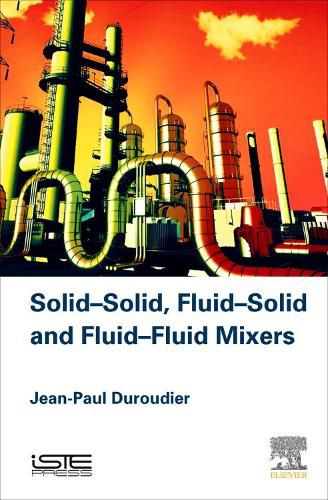Readings Newsletter
Become a Readings Member to make your shopping experience even easier.
Sign in or sign up for free!
You’re not far away from qualifying for FREE standard shipping within Australia
You’ve qualified for FREE standard shipping within Australia
The cart is loading…






Solid-Solid, Fluid-Solid, Fluid-Fluid Mixers, part of the Industrial Equipment for Chemical Engineering set, presents an in-depth study of a variety of aspects within the field of chemical engineering. This volume is both theoretical and practical, focusing on emulsions of one liquid into another, the dispersal of a divided solid into a liquid, and a gas into a liquid.
The book includes examples of mixtures of two powders, the process of dissolution of a powder in a liquid, and the homogenization of a pasty product. The types of devices needed, the criterion for homogeneity, the expended mechanical power, the flow processed, and the time required for the operation are also discussed.
The author provides methods needed for understanding the equipment used in applied thermodynamics in the hope of encouraging students and engineers to self build the programs they need. Chapters are complemented with appendices that provide additional information and associated references.
$9.00 standard shipping within Australia
FREE standard shipping within Australia for orders over $100.00
Express & International shipping calculated at checkout
Solid-Solid, Fluid-Solid, Fluid-Fluid Mixers, part of the Industrial Equipment for Chemical Engineering set, presents an in-depth study of a variety of aspects within the field of chemical engineering. This volume is both theoretical and practical, focusing on emulsions of one liquid into another, the dispersal of a divided solid into a liquid, and a gas into a liquid.
The book includes examples of mixtures of two powders, the process of dissolution of a powder in a liquid, and the homogenization of a pasty product. The types of devices needed, the criterion for homogeneity, the expended mechanical power, the flow processed, and the time required for the operation are also discussed.
The author provides methods needed for understanding the equipment used in applied thermodynamics in the hope of encouraging students and engineers to self build the programs they need. Chapters are complemented with appendices that provide additional information and associated references.